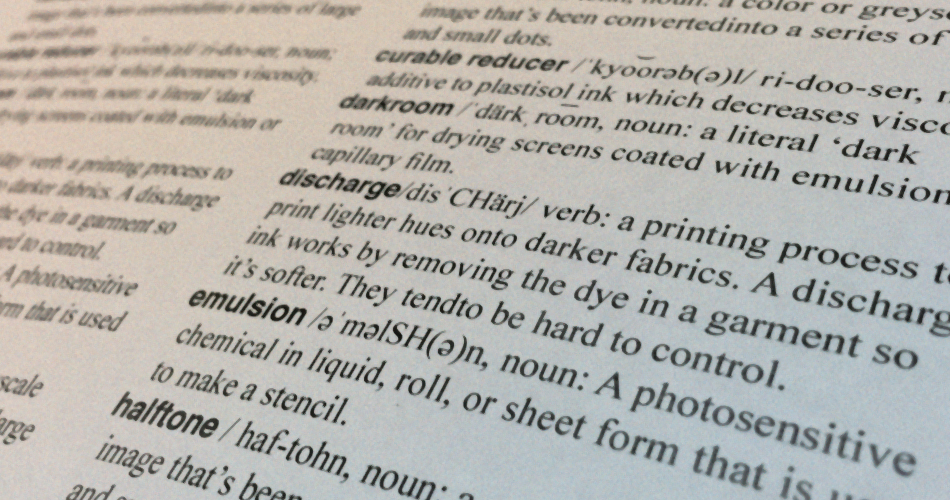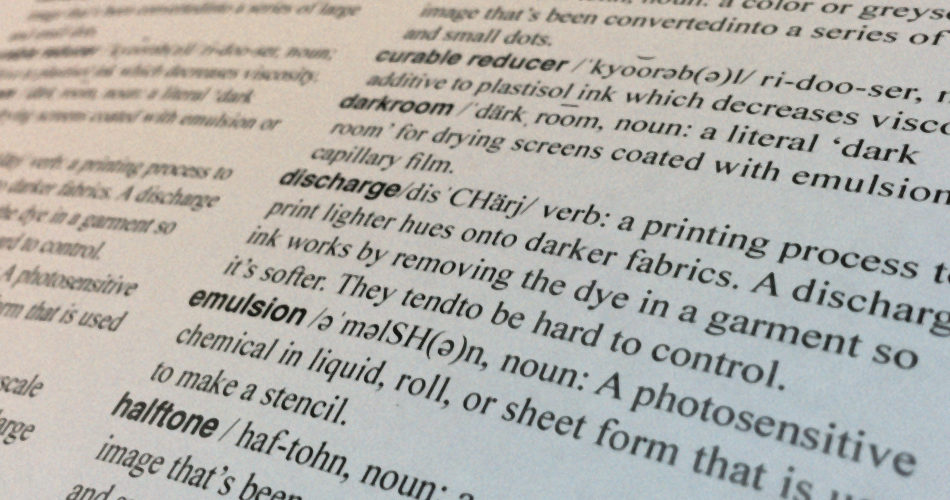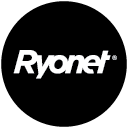New to the screen printing world and a little overwhelmed by the seemingly-endless terminology? We got with the team at Ryonet to put together cheat sheet of the most common screen printing terms so you’ll be on your A-game 24/7!
The Screen Printers’ Dictionary
Block-Out: chemical that’s used to cover pink holes and block out the screen so ink doesn’t go through.
Burn: exposing a screen coated in emulsion to a light source, creating a stencil.
Capillary Film: light and sensitive film used to create a stencil. When applied to a screen with water, it adheres to the mesh by capillary action.
Coating: applying direct emulsion to a screen.
Conveyor Dryer: belt used for curing inks.
Coroplast: solvent ink used in printing coroplast blanks.
Curable Reducer: additive to plastisol ink which decreases viscosity.
Cure: when one uses heat to fuse together plastisol ink.
Darkroom: a literal ‘dark room’ for drying screens coated with emulsion or capillary film.
Degrease: washing screen with cleaner to remove dirt and oil before coating with emulsion.
Dehaze: using a cleaning agent to remove ghosted images on a screen.
Diazo Emulsion: a two-part photosensitive emulsion.
Discharge Ink: a great way to print lighter hues onto darker fabrics. These work by removing the dye in a garment so it’s softer. They tend to be hard to control.
DPI: Dots per inch, which is a measure of spatial printing or video dot density.
Durometer: used to describe and measure how hard rubber may be (aka how hard a squeegee blade is).
Emulsion: A photosensitive chemical in liquid, roll, or sheet form that is used to make a stencil.
Flocking: a material printed onto the fabric for a mirror finish or super-soft touch.
Four-Color Process: utilizing four ink colors to print the whole color spectrum.
Full Cure: When plastisol ink film has fused.
Halftone: a color or greyscale image that’s been converted into a series of large and small dots.
Halftone Dot Types: Shapes of halftone dots.
Infrared: Energy wavelengths which produce heat.
Manual Press: a press used to transfer ink.
Mesh: woven material on the printable portion of the screen.
Mesh Count: the number of threads in one square inch, measured in both directions.
Micro-registration: adjustment on the print head of a screen printing press, used for precise movement.
Monofilament: single-strand threads woven into screen fabric.
Off-Contact: Screen-printing method with a slight gap between the screen and the substrate.
Pinholes: tiny unwanted specs that appear on the stencil after exposure.
PMS: pantone Matching System, which mixes various inks to get the best pantone color.
Positive: media used to block out UV light during the exposure process.
Print Side: the side of the screen that touches the substrate being printed on.
Reclaim: the process of removing old emulsion from a screen so the screen can be reused.
Reducer: colorless ink additive used to lower the viscosity of ink.
Registration: lining up the screen image to the original art on a printing press.
Retensionable Frames: frames that allow mesh to be applied over the screen without the use of stretching equipment.
Safelight: light used when working with photosensitive materials to prevent accidental exposure to UV light.
Squeegee: wooden or metal handled tool with a rubber blade used to drive ink through the stencil by pulling.
Squeegee Side: side of the screen the ink is applied to.
Spot Color: color reproduced by an opaque, premixed, or standard ink from a system such as Pantone.
Stencil: portion of the exposed screen containing an image to be printed.
Step Wedge Test: an exposure test used to tell you proper exposure time.
Substrate: term for the item you’re printing.
Tension: tightness of the screen mesh.
Underbase: thin coating of ink printed first and cured later to act as a base for all the other colors.
Underexposed: insufficient screen exposure time.
Viscosity: the thickness or thinness of an ink.
Wash Test: laundering a garment to decide if it’s fully cured.
Washout Booth: A booth used for washing out stencils and screens.
That concludes your vocabulary lesson! Are there any other terms you feel are critical for screen printers to know? Let us know in the comments below.





2 Comments
Jon
ink holes *